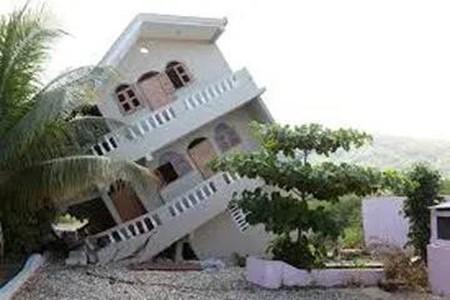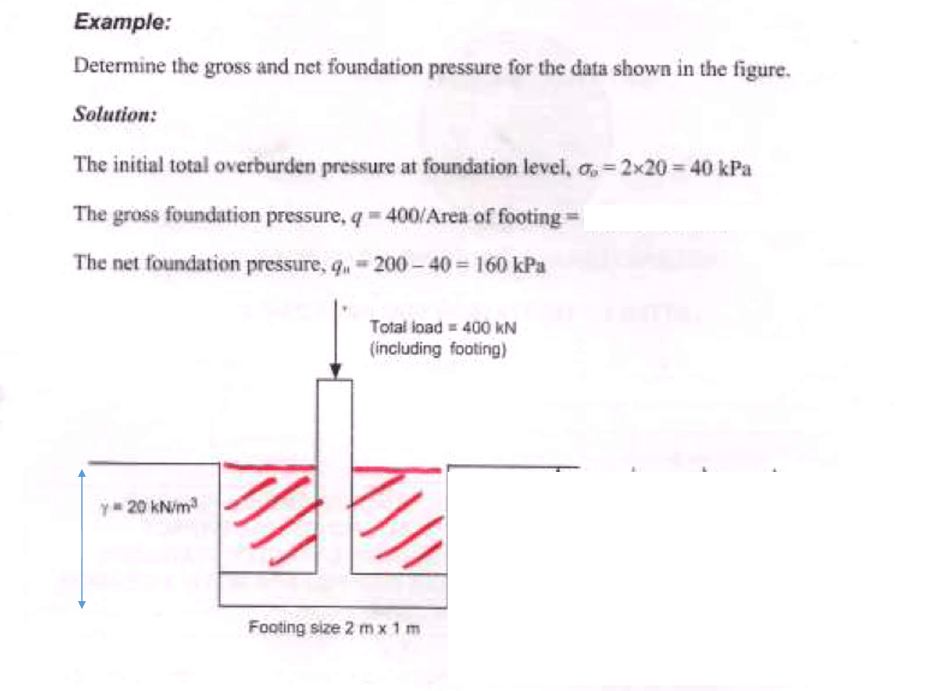
BUILDING
Foundation Calculations
Soil Investigation

-
Determination of surface and subsurface soil conditions and features in an area of proposed construction that may influence the design and construction and address expected post construction problems.



- Soils Investigation
-
Required to evaluate an area for the construction of a project or evaluate local material as a construction material
-
Soil Investigation
- Field Sampling and Testing
- Laboratory Analysis
- Report preparation
- Field Sampling and Testing
-
Planning and evaluation of field work are aided by knowledge of the mechanics of soil deposit’s formation
-
Foundation
It is the bottom most structural element of the substructure which transmits the structural load including its own weight on to and /or into the soil(s) underneath/surrounding without causing shear failure or bearing capacity failure (sudden collapse) and excessive settlement.
Contact Pressure
The pressure generated by the structural loading and the self-weight of the member on to or into the soil immediately underneath is called contact pressure (σo).


The contact pressure is independent of soil parameters; it depends only on the load and the x-sectional area of the element carrying the load.

Gross Pressure = Structure Pressure + Overburden Pressure
Net Pressure = Gross Pressure – Overburden Pressure
= Structural Pressure

ULTIMATE BEARING CAPACITY = the soil pressure against which soil will not fail in shear and settlement will be within permissible limits.
Allowable/SAFE BEARING CAPACITY (SBC). qs
The foundation engineer has to assure the safety against BC failure and
for this purpose, the UBC is divided by a factor of safety (FOS).
The FOS depends upon the soil type (cohesive. or cohesionless), type of structure (dam, building, pavement etc.), reliability of the soil parameters etc.
Usually the FOS ranges from 2 to 5 used.
TABLE l 0.2 Presumptive bearing capacity values of Nat ional Bu il,d ing Code
| Soil T:ir•pc | Max. Bearing Capacitv (tsf) |
| Clay: Soft Medium stiff Compact (firm) Hard |
l to 1.5 2.5 2 5 |
| Sand: | |
| Fine, loose Coarse, loose |
2 ...,, |
| Compac t, coarse | 4 to 6 |
| Gravel: | |
| Loose Sand-gravel m”tllre. compact |
4to 6 6 |
| Very compact | IO |
| Sand –clay mh:.., compact Saod–cla • mix_ , loose. sa turat ed |
,., J l |
| Hard pan, compacted or ce ment ed |
l Oto 12 |
| Rock: | |
| Soft | 8 |
| Mediwn har d | 40 |
| Hard | 60 |
| Sedimentary Rocks: Shale Hard shale Lime stoue Sand stone Chalk |
8 to ‘IO |
| 8 to 10 | |
| 10 to 20 JO to 20 |
|
| 8 | |
| Igneous Rocks: Granite. Lava., Basalt, Diori te etc. |
20 to 40 to 100 |
| Metamorphic Rocks: Gneiss |
100 |
| Marble Schist Slate |
10 to 20 20 to 40 8 |
FAILURE MODES
The soil underneath the foundation may fail in any of the following three modes individually or under a combination of these modes:
- General Shear Failure
- Punching Shear Failure
- Local Shear Failure (an intermediate mode of failure between conditions a and b).
Terzaghi (1943) General Shear Failure
Local Shear Failure
Vesic (1963) added Punching Shear Failure

Soil around the footing bulges out
Failure is sudden accompanied by tilting




𝑞 = 𝛾𝐷 Overburden Pressure
Nc, Nq and NƔ are Terzaghi factors
B = width of footing
c = soil cohesion and Ɣ is unit weight of soil
Table 1 Ni factors for use in Terzaghi1s bearing capacity equation.
| I (degree) |
Ne |
,–.,Yq |
Ny |
| 0 |
5..7 |
L.O |
0.0 |
| 5 |
7..3 |
L.6 |
0.5 |
| 10 |
9..6 |
2..7 |
1 .2 |
| 15 |
12..9 |
4 ..4 |
2.5 |
| 20 |
17..7 |
7..4 |
5.0 |
| 25 |
25..1 |
12.. 7 |
9.7 |
| 30 |
37.2 |
22..5 |
19..7 |
| 35 |
57..8 |
41.. 4 |
42..4 |
| 40 |
95..7 |
81.J |
100 ..4 |
| 45 |
172..3 |
173.3 |
297.. 5 |
| 50 |
347..5 |
415.1 |
1153.2 |
Calculate Allowable bearing capacity of the soil.


REFERENCES
- Basic Construction Training Manual for Trainers by Heini Müller
- Foundation Analysis and Design, Joseph E. Bowles, 5th ed.
THANK YOU
Assignment
Solve the example with foundation dimensions 2×3 m.






